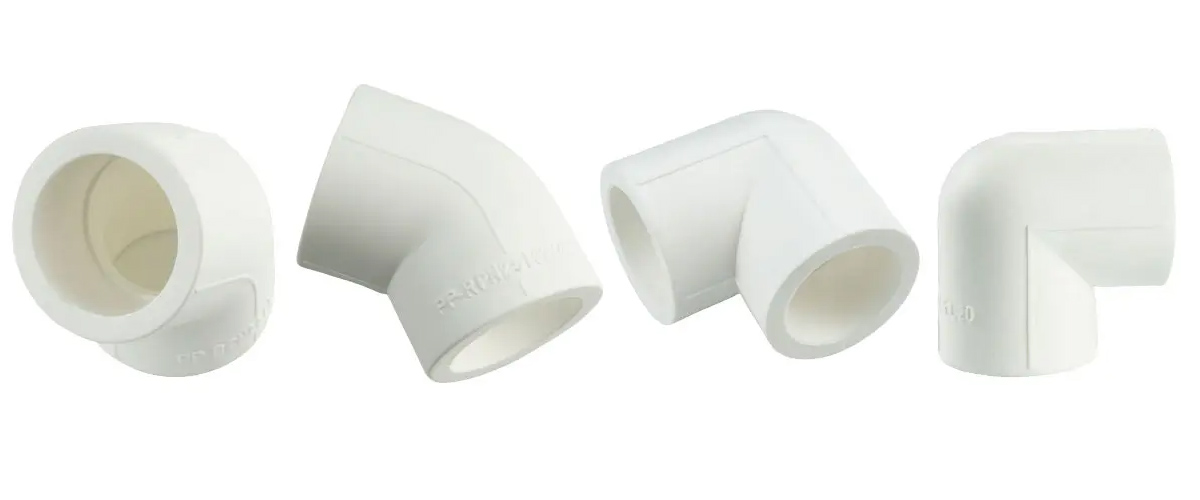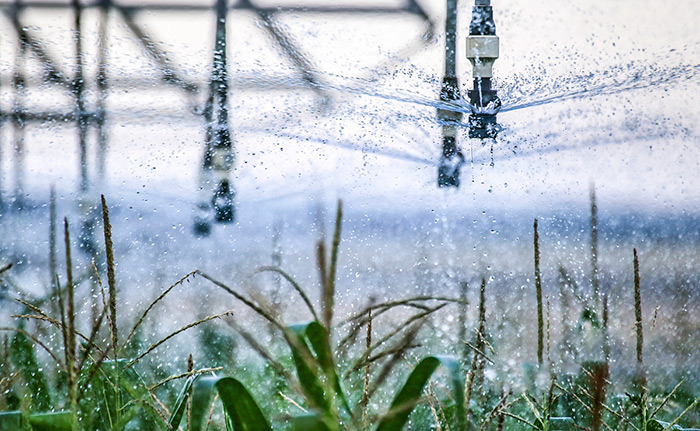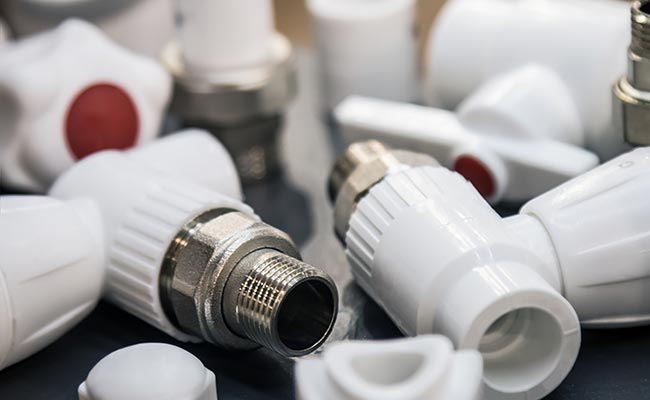
PPR-redukta kubuto estas speciala tubista armaturo, kiu konektas tubojn de malsamaj diametroj laŭ angulo. Ĉi tiu malgranda sed esenca komponanto certigas glatajn transirojn inter tuboj, permesante al akvo flui efike. Ĝi ankaŭ helpas ŝpari spacon, igante ĝin ideala por modernaj tubistaj sistemoj, kie kompaktaj dezajnoj estas esencaj.
Ŝlosilaj Konkludoj
- PPR-reduktaj kubutoj kunigas tubojn de malsamaj grandecoj laŭ angulo. Ili helpas akvon flui glate kaj ŝparas spacon en akvotubaraj sistemoj.
- Ĉi tiuj partoj estas fortikaj kaj ne rustas, kio igas ilin daŭri longe por hejmoj kaj entreprenoj.
- PPR-reduktantaj kubutojestas facile instaleblaj kaj prizorgeblaj. Ili ŝparas tempon kaj monon por tubistoj kaj domposedantoj.
Komprenante PPR-Reduktajn Kubutojn
Kio estas PPR-reduktaj kubutoj?
PPR-reduktaj kubutoj estas esencaj armaturoj en modernaj akvotubaraj sistemoj. Ili konektas du tubojn de malsamaj diametroj laŭ angulo, certigante glatan transiron por akvofluo. Ĉi tiuj armaturoj estas faritaj el polipropilena hazarda kopolimero (PPR), materialo konata pro sia forto kaj rezisto al eluziĝo. Uzante PPR-reduktan kubuton, tubistoj povas krei efikajn tubaranĝojn, kiuj ŝparas spacon kaj reduktas materialan malŝparon.
Unu el la elstaraj trajtoj de ĉi tiuj kubutoj estas ilia kapablo pritrakti kaj varmajn kaj malvarmajn akvosistemojn. Ĉi tiu versatileco igas ilin populara elekto por loĝdomaj, komercaj kaj industriaj akvotubaraj projektoj. Ĉu temas pri malgranda domrenovigo aŭ grandskala konstruprojekto, PPR-reduktaj kubutoj ludas gravan rolon en certigado de fidinda akvodistribuado.
Ĉefaj Trajtoj kaj Specifoj
PPR-reduktaj kubutoj venas kun gamo da trajtoj, kiuj igas ilin nemalhaveblaj en akvotubaro. Jen kelkaj el iliaj ĉefaj karakterizaĵoj:
- DaŭripovoĈi tiuj armaturoj estas desegnitaj por daŭri. Fabrikistoj faras rigorajn testojn, kiel hidrostatikan premotestadon kaj fraprezistotestojn, por certigi, ke ili povas elteni altan akvopremon kaj fizikan streson.
- Kemia RezistoPPR-reduktaj kubutoj rezistas agresemajn fluidojn, kio faras ilin taŭgaj por diversaj aplikoj, inkluzive de tiuj, kiuj implikas severajn kemiaĵojn.
- Media ElfaroAkcelitaj maljuniĝtestoj validigas ilian longdaŭran rendimenton, eĉ en malfacilaj medioj.
- Dimensia PrecizecoĈiu akcesoraĵo spertas striktajn inspektajn protokolojn por certigi precizajn dimensiojn kaj perfektan konvenon.
| Trajto | Profito |
|---|---|
| Rezisto al Korodo | Malhelpas ruston kaj certigas longdaŭrecon. |
| Malpeza Dezajno | Faciligas instaladon kaj reduktas ŝarĝon sur akvotubaraj sistemoj. |
| Varmo-Toleremo | Taŭga por varmakvaj sistemoj sen risko de deformado. |
Ĉi tiuj trajtoj elstarigas kial PPR-reduktaj kubutoj estas fidinda elekto por moderna akvotubaro. Ilia kapablo kombini forton, fidindecon kaj adaptiĝemon certigas, ke ili plenumas la postulojn de hodiaŭaj akvosistemoj.
Tipoj de PPR-Reduktaj Kubutoj
Klasifiko laŭ Angulo (ekz., 45-grada, 90-grada)
PPR-reduktaj kubutoj haveblas en malsamaj anguloj por konveni al diversaj bezonoj de akvotubaro. La plej oftaj opcioj estas 45-gradaj kaj 90-gradaj kubutoj. 45-grada redukta kubuto milde redirektas la akvofluon, igante ĝin ideala por sistemoj, kiuj postulas glatajn transirojn. Ĉi tiu angulo minimumigas premperdon kaj reduktas la riskon de turbuleco en la tuboj. Aliflanke, 90-grada redukta kubuto kreas pli akran turnon. Ĝi funkcias plej bone en malvastaj spacoj, kie tuboj bezonas rapide ŝanĝi direkton.
La elekto de la ĝusta angulo dependas de la aranĝo de la akvotubara sistemo. Ekzemple, 45-grada kubuto povus esti pli bona por longaj duktoj, dum 90-grada kubuto bone taŭgas por kompaktaj areoj. Ĉi tiuj opcioj donas al tubistoj la flekseblecon desegni efikajn sistemojn sen kompromiti la rendimenton.
Klasifiko laŭ Grandeco kaj Diametro
PPR-reduktaj kubutoj ankaŭ varias laŭ grandeco kaj diametro. Ili estas desegnitaj por konekti tubojn de malsamaj larĝoj, certigante senjuntan transiron inter ili. Grandecoj varias de malgrandaj diametroj, kiel 20mm, ĝis pli grandaj, kiel ekzemple 160mm. Ĉi tiu diverseco permesas al ili adaptiĝi al kaj loĝdomaj kaj industriaj akvotubaraj sistemoj.
La grandeco de la PPR-redukta kubuto devas kongrui kun laspecifaj postuloj de la projektoEkzemple, pli malgrandaj diametroj ofte estas uzataj en hejma akvotubaro, dum pli grandaj estas oftaj en komercaj aŭ industriaj aranĝoj. Ĉi tiu adaptiĝkapablo igas ilin multflanka elekto por diversaj aplikoj.
Avantaĝoj de PPR-Reduktigaj Kubutoj
Daŭreco kaj Rezisto al Korodo
PPR-reduktaj kubutoj estas konstruitaj por daŭri. Ilia daŭreco igas ilin fidinda elekto por akvotubaraj sistemoj en kaj loĝdomaj kaj industriaj medioj. Male al metalaj armaturoj, kiuj povas rustiĝi kun la tempo, ĉi tiuj kubutoj rezistas korodon eĉ en severaj medioj. Ĉi tiu rezisto certigas, ke la akvokvalito restas netuŝita kaj la akvotubara sistemo restas sendifekta dum jaroj.
Esplorado montris, ke PPR-tuboj, inkluzive de armaturoj kiel reduktaj kubutoj, funkcias escepte bone en agresemaj medioj. Ekzemple, eksperimenta studo rivelis, ke eksponiĝo al natria hipoklorito ne kompromitis iliajn mekanikajn ecojn. Ĉi tio elstarigas ilian kapablon elteni kemian eksponiĝon sen degradiĝi. Plie:
- PPR-tuboj kaj armaturoj povas daŭri pli ol 50 jarojn se uzataj ĝuste.
- Ili rezistas UV-radiadon, kio igas ilin taŭgaj por subĉielaj aplikoj.
- Ilia daŭreco reduktas la bezonon de oftaj riparoj, malaltigante bontenadkostojn.
Ĉi tiuj trajtoj farasPPR-reduktantaj kubutoj estas kostefikajkaj longdaŭra solvo por modernaj akvotubaraj sistemoj.
Kongrueco kun varmaj kaj malvarmaj akvosistemoj
Unu el la elstaraj kvalitoj de PPR-reduktaj kubutoj estas ilia versatileco. Ili funkcias perfekte kun kaj varmaj kaj malvarmaj akvosistemoj, igante ilin preferata elekto por vasta gamo da aplikoj. Ĉu temas pri loĝdoma kuirejo aŭ industria hejtsistemo, ĉi tiuj armaturoj facile pritraktas temperaturŝanĝojn.
PPR-materialo havas bonegan termikan reziston. Ĝi povas elteni altajn temperaturojn sen deformiĝi, kio estas esenca por varmakvaj sistemoj. Samtempe, ĝi konservas sian strukturan integrecon en malvarmakvaj aplikoj, certigante konstantan funkciadon. Ĉi tiu adaptiĝkapablo forigas la bezonon de apartaj armaturoj por malsamaj akvosistemoj, simpligante la instalan procezon kaj reduktante kostojn.
Facileco de Instalo kaj Prizorgado
PPR-reduktaj kubutoj estas desegnitaj konsiderante la komforton de la uzanto. Ilia malpeza konstruo faciligas ilian manipuladon, eĉ en malvastaj spacoj. Tubistoj povas rapide instali ĉi tiujn armaturojn sen bezono de specialaj iloj aŭ ampleksa trejnado. Ĉi tiu simpleco akcelas la instalan procezon, ŝparante kaj tempon kaj laborkostojn.
Prizorgado estas same senĝena. Danke al ilia korodrezisto kaj daŭreco, ĉi tiuj kubutoj postulas minimuman prizorgadon. Ili ne facile likas aŭ fendiĝas, kio signifas malpli da riparoj dum sia vivdaŭro. En eksteraj aplikoj, ilia UV-rezisto plue reduktas eluziĝon, certigante longdaŭran fidindecon. Por domposedantoj kaj entreprenoj, tio tradukiĝas al trankvilo kaj pli malaltaj prizorgaj elspezoj.
Aplikoj de PPR-Reduktigaj Kubutoj
Loĝdomaj Akvotubaraj Sistemoj
PPR-reduktantaj kubutojestas bazvaro en loĝdoma akvotubaro. Ili helpas domposedantojn optimumigi spacon per konektado de tuboj de malsamaj grandecoj en malvastaj lokoj kiel sub lavujoj aŭ malantaŭ muroj. Ĉi tiuj armaturoj certigas glatan akvofluon, ĉu por kuirejaj kranoj, banĉambraj duŝejoj aŭ eksteraj ŝprucigiloj. Ilia malpeza dezajno faciligas ilian instaladon, eĉ en malfacile atingeblaj lokoj. Plie, ilia daŭreco signifas malpli da riparoj, kio ŝparas tempon kaj monon por domposedantoj.
Multaj tubistoj preferas PPR-reduktajn kubutojn por hejmaj renovigoj. Ili simpligas tubaranĝojn kaj reduktas la bezonon de aldonaj armaturoj. Ĉi tiu efikeco ne nur akcelas la instalan procezon, sed ankaŭ minimumigas materialan malŝparon. Por familioj, tio signifas fidindajn akvosistemojn, kiuj daŭras jardekojn.
Komerca kaj Industria Akvotubaro
En komercaj kaj industriaj kontekstoj, PPR-reduktaj kubutoj brilas en grandskalaj akvotubaraj sistemoj. Fabrikoj, oficejaj konstruaĵoj kaj butikcentroj ofte bezonas kompleksajn tubretojn por pritrakti grandajn akvokvantojn. Ĉi tiuj armaturoj konektas tubojn de diversaj diametroj, certigante senjuntajn transirojn kaj malhelpante premfalojn. Ilia kapablo rezisti korodon igas ilin idealaj por medioj kie kemiaĵoj aŭ altaj temperaturoj estas oftaj.
Entreprenoj profitas de la versatileco de PPR-reduktaj kubutoj. Ili bone funkcias en kaj varmaj kaj malvarmakvaj sistemoj, kio igas ilin taŭgaj por diversaj aplikoj kiel hejtsistemoj, malvarmigturoj kaj akvopurigejoj. Ilia longa vivdaŭro reduktas bontenadkostojn, kio estas granda avantaĝo por industrioj celantaj redukti elspezojn.
Specialigitaj Uzoj en HVAC kaj Hejtaj Sistemoj
PPR-reduktaj kubutoj ludas gravan rolon en hejtado, ventolado kaj klimatiziloj. Ili helpas direkti akvofluon efike, certigante optimuman funkciadon en kaldronoj, radiatoroj kaj klimatiziloj. Ilia varmo-eltenivo igas ilin perfektaj por sistemoj, kiuj funkcias je altaj temperaturoj. Samtempe, ilia rezisto al eluziĝo certigas, ke ili povas pritrakti la postulojn de kontinua uzo.
HVAC-teknikistoj fidas je ĉi tiuj armaturoj por krei kompaktajn kaj efikajn aranĝojn. Ĉu temas pri loĝdoma hejtsistemo aŭ komerca klimatizilo, PPR-reduktaj kubutoj simpligas la dezajnprocezon. Ilia adaptiĝemo permesas al ili konveni en malvastajn spacojn, igante ilin praktika elekto por modernaj hejtaj kaj malvarmigaj sistemoj.
Komparante PPR-Reduktajn Kubutojn kun Aliaj Konektiloj
PPR-Reduktigaj Kubutoj kontraŭ Normaj Kubutoj
Normaj kubutoj kaj PPR-reduktaj kubutoj povas aspekti similaj, sed ili servas malsamajn celojn. Normaj kubutoj konektas tubojn kun la sama diametro, dum PPR-reduktaj kubutoj ligas tubojn de diversaj grandecoj. Ĉi tiu diferenco igas reduktajn kubutojn pli multflankaj, precipe en sistemoj kie tubdiametroj ofte ŝanĝiĝas. Ekzemple, en loĝdoma akvotubara sistemo, redukta kubuto povas konekti pli grandan ĉefan akvotubon al pli malgrandaj branĉaj tuboj sen aldonaj armaturoj.
Alia ŝlosila distingo kuŝas en efikeco. Normaj kubutoj ofte postulas ekstrajn adaptilojn kiam oni konektas tubojn de malsamaj grandecoj. Tio aldonas kompleksecon kaj pliigas la riskon de likoj. PPR-reduktaj kubutoj simpligas la procezon kombinante ĉi tiujn funkciojn en unu konektilon. Tio ne nur ŝparas tempon sed ankaŭ reduktas materialajn kostojn.
PPR-Reduktigaj Kubutoj kontraŭ Kupladoj kaj Adaptiloj
Kupliloj kaj adaptiloj ankaŭ estas uzataj por konekti tubojn de malsamaj diametroj, sed al ili mankas la angula dezajno de PPR-redukta kubuto. Tio igas ilin malpli efikaj en situacioj kie tuboj bezonas ŝanĝi direkton. Ekzemple, en malvastaj spacoj aŭ kompleksaj aranĝoj, redukta kubuto provizas pli glatan transiron, plibonigante akvofluon kaj minimumigante premperdon.
Krome, kupliloj kaj adaptiloj ofte postulas pli da instalaĵpaŝoj. Tubistoj eble bezonos uzi plurajn konektilojn por atingi la saman rezulton, kiun povas provizi unu redukta kubuto. Tio faras PPR-reduktajn kubutojn pli efika kaj flulinia elekto por modernaj akvotubaraj sistemoj.
Unikaj Avantaĝoj de PPR-Reduktigaj Kubutoj
PPR-reduktaj kubutoj elstaras pro sia kapablo kombini plurajn funkciojn en unu konektilon. Ili konektas tubojn de malsamaj grandecoj, ŝanĝas direkton kaj konservas akvofluan efikecon - ĉio en ununura komponanto. Ĉi tiu versatileco reduktas la bezonon de ekstraj konektiloj, ŝparante kaj tempon kaj monon.
Iliafortikeco kaj rezisto al korodoankaŭ distingas ilin. Male al metalaj armaturoj, kiuj povas rustiĝi kun la tempo, PPR-reduktaj kubutoj konservas sian integrecon eĉ en severaj medioj. Tio igas ilin fidinda elekto por kaj loĝdomaj kaj industriaj aplikoj. Ĉu temas pri malgranda hejma projekto aŭ grandskala akvotubara sistemo, ĉi tiuj armaturoj liveras neegalan rendimenton kaj komforton.
PPR-reduktaj kubutoj revoluciigis akvotubarajn sistemojn per sia fortikeco, versatileco kaj facileco de uzo. Ili certigas efikan akvofluon samtempe ŝparante spacon, igante ilin nemalhaveblaj en loĝdomaj, komercaj kaj industriaj aplikoj. Dum urbigo kreskas, la postulo je ĉi tiuj armaturoj pliiĝas. Konstruistoj pli kaj pli preferas ilin pro ilia recikleblo kaj longa vivdaŭro, konforme al tendencoj pri daŭripova konstruado. Kun progresoj en fabrikadaj teknologioj, PPR-reduktaj kubutoj fariĝos eĉ pli precizaj kaj adapteblaj, pavimante la vojon por pli inteligentaj akvotubaraj solvoj.
Oftaj Demandoj
Kio estas la ĉefa celo de PPR-redukta kubuto?
PPR-redukta kubuto konektas tubojn de malsamaj grandecoj laŭ angulo. Ĝi certigas glatan akvofluon kaj helpas optimumigi spacon en akvotubaraj sistemoj.
Ĉu PPR-reduktaj kubutoj povas pritrakti varmakvajn sistemojn?
Jes! Ĉi tiuj armaturoj estas varmorezistaj kaj funkcias perfekte en varmakvaj sistemoj sen deformiĝi. Ili ankaŭ bonegas por malvarmakvaj aplikoj.
Konsileto:Ĉiam kontrolu la temperaturrangigon de via PPR-redukta kubuto antaŭ instalado por certigi kongruecon kun via sistemo.
Ĉu PPR-reduktaj kubutoj estas facile instaleblaj?
Absolute! Ilia malpeza dezajno faras la instaladon rapida kaj senĝena. Tubistoj ne bezonas specialajn ilojn aŭ ampleksan trejnadon por uzi ilin.
Afiŝtempo: 14-majo-2025









